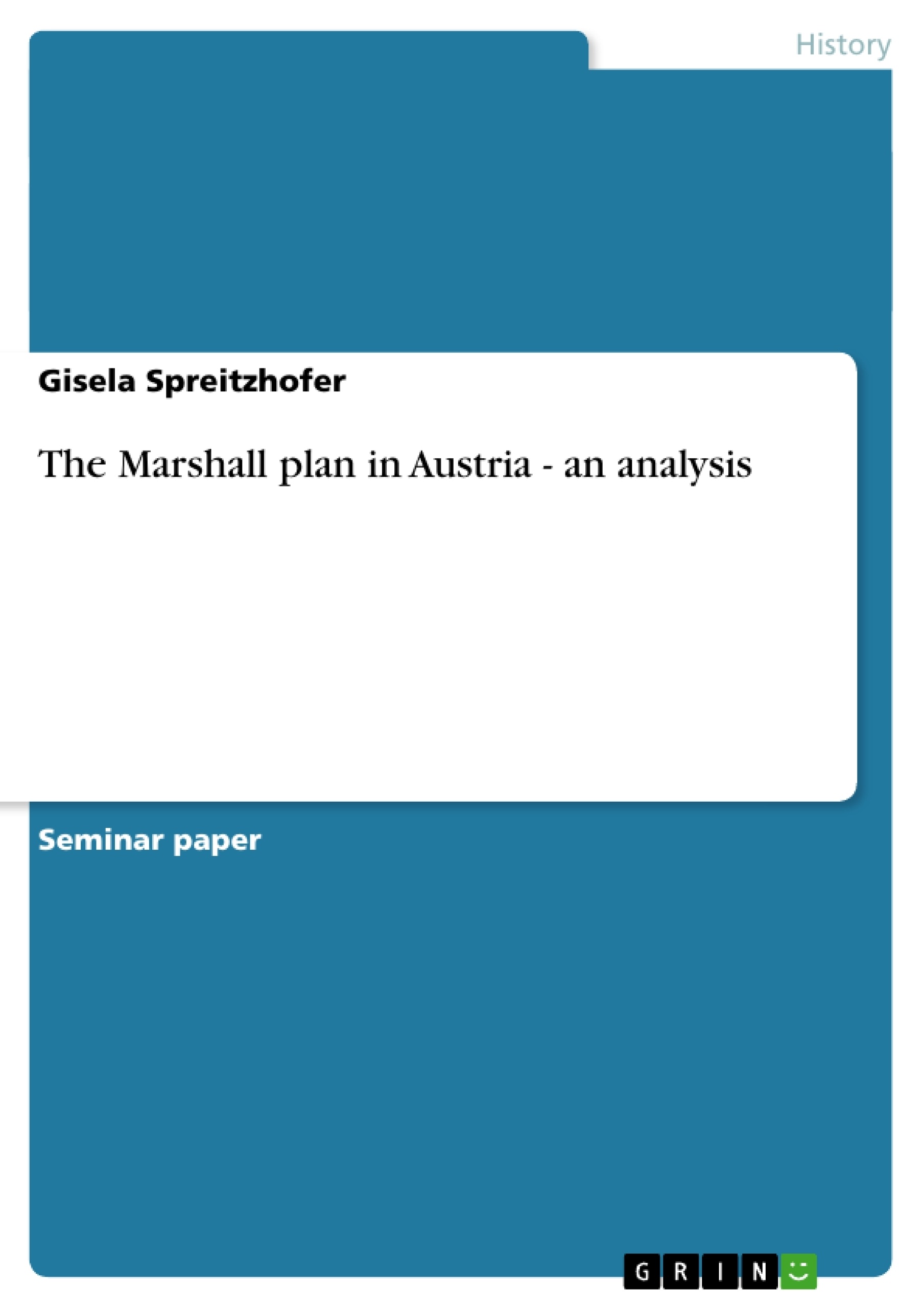The Austrian Republic, which had been unable to survive economically in the aftermath of World War I, recovered surprisingly quickly from the serious economic consequences of World War II. In fact, it became one of the world’s wealthiest nations within a few years only, achieving extraordinarily high growth rates and per-capita income increases on an international scale.
The Marshall Plan's historical role for Austria is a topic that has been rather neglected by historians for several decades. By writing this paper I would like to make a contribution to the memory of the Marshall Plan which was the biggest reconstruction aid project ever. Perhaps no country benefited more from it than Austria: Between 1948 and 1952, the United States supported Austria with goods worth approximately one billion dollars, which cost each American tax payer 80 dollars. Each Austrian received 133 dollars from the Plan, more than any other of the sixteen participating Western European countries. Apart from its economic effect, the Marshall Plan also transported the American way of life to Western Europe and Austria.
I would like to start this paper by giving an overview of how Austria’s economic situation was like immediately after the end of World War II. The following chapter discusses the birth of the Marshall Plan, first on the Western, then on the Eastern side of the Atlantic. Then I will focus chronologically on the stages of Austria’s participation in the Plan, before its impact on Austrian post-war identity-building will be explained. A conclusion will finish the paper.
Inhaltsverzeichnis (Table of Contents)
- 1 Introduction: The Austrian "Economic Miracle" After World War II
- 2 The State of Austrian Affairs from 1945 to 1946 - Shortage Economy
- 3 The Birth of the Marshall Plan in 1946/47.
- 3.1 The American Origins of an Economic Aid Program for Western Europe
- 3.2 The European Response and the Setup of the European Recovery Program
- 4 Austria's Participation in the Marshall Plan
- 4.1 A Risky Decision
- 4.2 The Launching of the ERP
- 4.3 The Marshall Plan's Implementation
- 4.4 Priorities and HighligHTS of the ERP Between 1949 and 1951
- 4.5 The Stabilization Crisis and Its Overcoming Between 1951 and 1953.
- 5 Occupation, the ERP, and Austrian Identity
- 6 Conclusion
Zielsetzung und Themenschwerpunkte (Objectives and Key Themes)
This paper aims to explore the significant role of the Marshall Plan in Austria's post-World War II economic recovery, focusing on the "economic miracle" that transformed the nation into one of the world's wealthiest. It examines the factors contributing to this transformation, highlighting the impact of American aid programs and their role in Austria's trajectory towards European integration.
- Austria's economic situation immediately after World War II
- The genesis and implementation of the Marshall Plan
- Austria's participation in the Marshall Plan and its phases
- The Marshall Plan's influence on Austrian identity formation
- The significance of the Marshall Plan beyond economic aid
Zusammenfassung der Kapitel (Chapter Summaries)
The first chapter provides a context for the "economic miracle" by examining the state of Austrian affairs in the immediate aftermath of World War II, detailing the economic hardships and the role of American aid programs in survival. The second chapter delves into the origins and implementation of the Marshall Plan, analyzing both the American and European perspectives on the initiative. It focuses on the plan's three stages of recovery, outlining the specific ways in which the plan was implemented in Austria.
Schlüsselwörter (Keywords)
The key terms and concepts explored in this paper encompass: Marshall Plan, Austrian economic recovery, post-World War II reconstruction, American aid, European integration, Austrian identity, and the "economic miracle."
- Quote paper
- MMag. M.A. Gisela Spreitzhofer (Author), 2006, The Marshall plan in Austria - an analysis, Munich, GRIN Verlag, https://www.grin.com/document/48817



